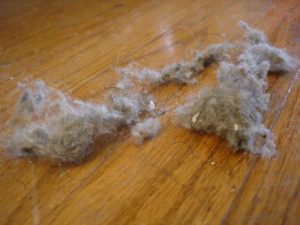 Flame retardants are a big, big concern nowadays, with their links to all sorts of health problems, including endocrine disruption, cancer, reproductive problems, etc. (here) And it's hard to avoid them - they're in products all around us, including the upholstered furniture and electronics that most people have in their homes. They leach or "migrate" out of the products, enter into the air, and settle as dust particles in our homes, and in the process get into us - from inhalation and ingestion of the dust. So we can't fully avoid them... but we can drastically reduce the amounts we get into us fairly quickly as a recent study showed.
Flame retardants are a big, big concern nowadays, with their links to all sorts of health problems, including endocrine disruption, cancer, reproductive problems, etc. (here) And it's hard to avoid them - they're in products all around us, including the upholstered furniture and electronics that most people have in their homes. They leach or "migrate" out of the products, enter into the air, and settle as dust particles in our homes, and in the process get into us - from inhalation and ingestion of the dust. So we can't fully avoid them... but we can drastically reduce the amounts we get into us fairly quickly as a recent study showed.
The study (of 32 mothers living in New York City) found that more frequent hand washing and more frequent house cleaning for one week reduced flame retardant levels - as measured in the urine. About 50% reductions after one week! And yes, all women had flame retardants in their urine - some of which they were able to reduce, but not eliminate. Earlier research by most of this same group of researchers found that every toddler tested (25 toddlers living in New York City) had flame retardants (from dust) on their hands.
The US EPA says that dust is the major way humans are exposed to flame retardants. They suggest the following steps be taken to lower flame retardant exposure, especially if one has young children: frequent hand washing (especially before eating), dust frequently with a moist cloth, frequently wet mop or vacuum with a vacuum cleaner that has a HEPA filter, and repair tears to upholstered furniture. The study confirms that these steps work.
And please, if buying new upholstered furniture such as sofas, or rugs, or curtains, or some baby products - look at the label to make sure it doesn't contain flame retardants. Even the newer flame retardants that manufacturers claim are "safer" are still chemically related to the old versions, and have the same health concerns. From Medical Xpress:
Handwashing and house cleaning may protect against unhealthy chemicals
Washing your hands and cleaning your house frequently may help to lower your contact with common flame-retardant chemicals, according to a new study by researchers at the Columbia Center for Children's Environmental Health (CCCEH) at Columbia University's Mailman School of Public Health.
Flame retardant chemicals have been added to furniture and electronics since the 1970s to comply with fire safety standards. Manufacturers use of new organophosphate flame retardants (OPFRS) to consumer products has increased since 2005. OPFRs have been linked to endocrine disruption, decreased fertility, and thyroid dysfunction in humans. In this study, researchers examined exposure to a commonly used OPFR, Tris (1,3-dichlorisopropyl) phosphate, known as Tris, and six other flame retardants.
The Environmental Protection Agency (EPA) recommends practical steps like handwashing and housecleaning—dusting with a moist cloth, wet mopping, and vacuuming—to lower exposure to flame retardants. To assess whether handwashing and house cleaning effectively reduced exposure, senior investigator Julie Herbstman, Ph.D., associate professor of Environmental Health Sciences, designed a twofold behavioral intervention and enrolled 32 women from CCCEH's Sibling-Hermanos birth cohort.
Participants were randomly assigned to one of two interventions, house cleaning or handwashing, for the first week of the study. The house cleaning intervention group was given microfiber mops, vacuums, and microfiber cloths and asked to increase the amount they cleaned their home that week. The handwashing group was given hand soaps and asked to focus on washing their hands more than they typically do, especially before meals. During the second week of the study, all participants were asked to do both extra handwashing and housecleaning. Urine samples were collected from participants before the study began and following the first and second weeks of the intervention.
Tris was detected in 97 percent of urine samples. Following the first week of the intervention, the housecleaning group and handwashing group experienced a 47 percent decrease and 31 percent decrease in Tris levels measured in urine, respectively. Women with higher than average exposure to Tris before the intervention began, experienced a 74 percent decrease in their levels following a week of housecleaning. After the second week of the study, when participants were asked to do both housecleaning and handwashing, levels of Tris measured in urine fell 43 percent compared to baseline levels. Women with higher than average levels of exposure at baseline experienced the greatest decrease, with their levels of Tris falling 62 percent. Similar trends in exposure levels were seen for other OPFRs measured in this study.
"The results imply that both handwashing and house cleaning can be effective ways to reduce exposure to flame retardants and this evidence supports the EPA's recommendations," says Elizabeth A. Gibson, the study's first author and a Ph.D. student in the Department of Environmental Health Sciences at Columbia's Mailman School. "However, none of the reported flame retardants were reduced below the limit of detection, indicating that individual behavior cannot entirely reduce exposure."
